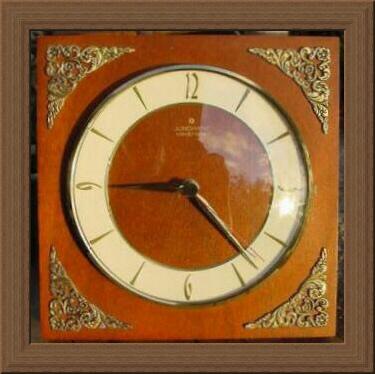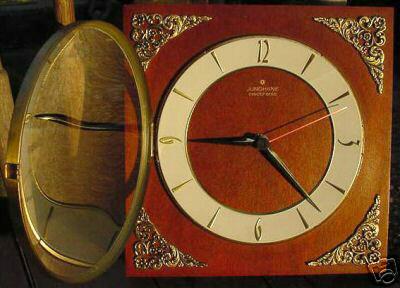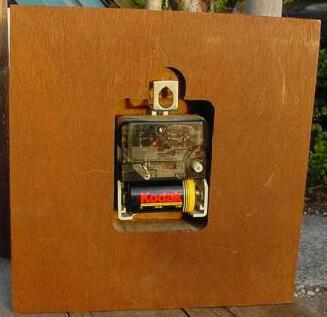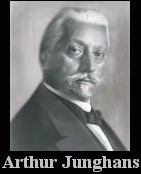

 - The Ebay Auction
- The Ebay Auction




1861 - A quest for Excellence
- from the very beginning
The Junghans watch factory came into being in 1861
Businessman Erhard Junghans founded the company in Schramberg,
a small town in the Black Forest, together with his brother-in-law
Jakob Zeller-Tobler
At first, they specialized in manufacturing individual parts for
watch production
The precision of Junghans work quickly became synonymous with
outstanding quality of manufacturing, and the foundation was laid
for a complete watchmaking enterprise
The first watches bearing the Junghans brand were designed and
constructed by the company's own master watchmakers in 1866

1875 - Arthur Junghans
Arthur Junghans took over managing the company in 1875, following
his father's premature death
Arthur was a watchmaker by trade and training and had traveled
to America, where he studied the latest technological possibilities
provided by rational production
Arthur Junghans introduced many new production techniques at the
company, providing the ideas, serving as designer, and playing
the role of technical leader
Even before the turn of the century, numerous machines and processes
were developed that gave Junghans outstanding advantages in terms
of quality and manufacturing
Arthur Junghans focused primarily on innovations in watchmaking,
and no less than 300 inventions were patented under his management
1890 - The Star over Junghans
The 8-point star that is still the Junghans trademark today was
first registered in 1890
Junghans watches came to be known as affordable, high-quality
products from Germany and sold well around the world
In 1903, Arthur Junghans' vision became a reality - Junghans was
the world's largest watch factory
More than 3,000 employees produced more than three million watches
each year
The manufacturing facility soon had to be expanded
And so the terrace building came into being, with a step-like
construction that delivered natural daylight to each and every
watchmaker's work station
The building is now protected as a historic monument
1946 - A precious legacy in difficult times
After Arthur Junghans' death, his sons Erwin and Oscar took over
management of the company in 1920
Continuing the company's legacy and maintaining its high standards
was no easy task, but the brothers mastered it successfully
At the start of the 1930's, the first wristwatches were produced
and would quickly replace pocket watches as the most popular style
of watch on the market
Even after the Second World War and the dismantling of the factory,
the innovative spirit of Junghans' master watchmakers remained
undaunted
Junghans developed the first wristwatch chronograph movement,
the legendary J88, as early as 1946
Junghans was also able to assert itself as a company with a long
tradition in the new market environment of post-war reconstruction
1970 - The Time of Quartz
Following the successful consolidation of the company after 1945,
Junghans began to focus on new, more precise methods for measuring
time
The first result of these efforts was the electric movement
But it was the newly invented quartz technology that Junghans
really took up and developed further
The first German quartz clock was built at the end of the 1960's
and Germany's first quartz wristwatch was built in 1970
As a pioneer of chronographic development, Junghans made history
once again as the official timekeeper of the 1972 Olympic Games
1985 - Junghans and the Radio-controlled Timepiece
Junghans created yet another revolution on the clock and watchmaking
market when they developed the first radio-controlled table clock
The world's first radio-controlled wristwatch, the Mega 1, followed
the first radio-controlled solar clock in 1990
To celebrate the Mega 1's 15-year birthday in 2005 and to pay
tribute to the classic, Junghans launched the Mega 1000, a new
interpretation of the world's first radio-controlled wristwatch
that combines contemporary design and ultra-modern technology